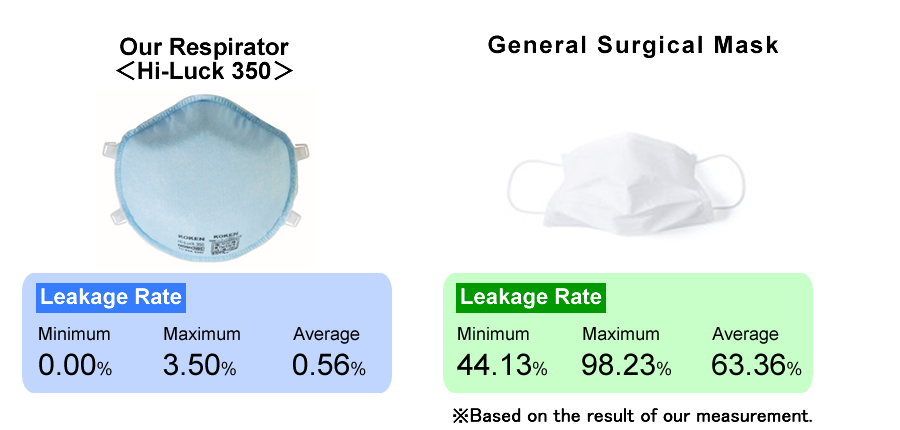
Relationship between Respirator Performance and Respirator Fit
The respirator with high-performance filter is now commonplace,
but if it does not fit on your face, it does not fulfill its intended purpose.
When you wear a respirator and breathes in, the pressure inside the respirator becomes negative. If there is a gap between the face and the respirator, the air outside the respirator will always leak in directly through the gap.The larger the gap, the more leakage will occur, and even though the respirator is worn, a large amount of air that does not pass through the filter will be inhaled.
Wearing a respirator has the effect of preventing inhalation of the outside air containing bacteria and viruses by filtering it through a filter. No matter how high-performance the filter is, it does not make sense to wear a respirator if it allows a large amount of air to leak in.














